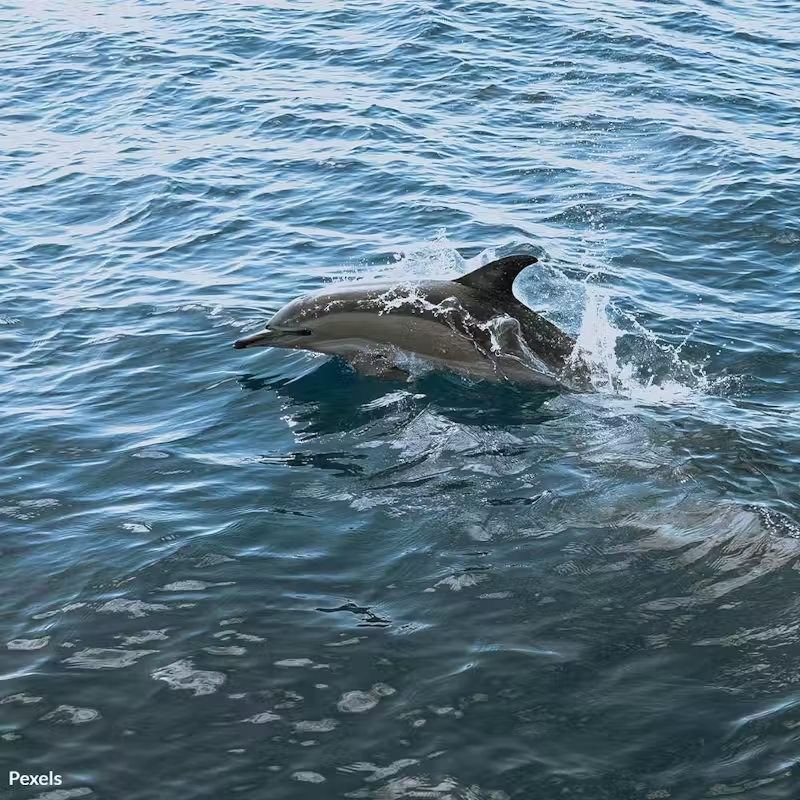Prevent the Tragic Loss of Louisiana’s Bottlenose Dolphins
1,124 signatures toward our 30,000 Goal
Sponsor: The Animal Rescue Site
Louisiana’s bottlenose dolphins are on the brink of extinction due to a massive water diversion project—take action now to protect these intelligent creatures!

Louisiana's bottlenose dolphins are in grave danger. These beloved marine mammals face a critical threat from the proposed Mid-Barataria Sediment Diversion project, which could lead to their functional extinction in Barataria Bay. Immediate action is needed to protect these intelligent creatures and preserve the delicate balance of our coastal ecosystem.
The Threat of the Mid-Barataria Sediment Diversion
The Mid-Barataria Sediment Diversion project, a $2 billion initiative to restore wetlands, involves diverting massive amounts of freshwater and sediment from the Mississippi River into Barataria Bay1. While this aims to rebuild land and reduce hurricane storm surges, it poses a severe risk to the local dolphin population.
Studies predict that this diversion will make dolphins "functionally extinct" in much of the Barataria Basin within a decade of its operation2. By the end of the first 50 years, dolphin numbers in the bay could drop by 85% without intervention1. The influx of freshwater will drastically lower salinity levels, causing skin lesions and other severe health issues in dolphins3.
In 2019, low salinity levels linked to freshwater inflows caused over 300 dolphin deaths across the Gulf Coast3. The same outcome threatens to repeat on a larger scale with this project.
Why Conservation is Crucial
Bottlenose dolphins are not just a symbol of the Gulf Coast’s rich marine life; they play a vital role in maintaining the health of the marine ecosystem. Their decline would indicate broader environmental distress, affecting fisheries, tourism, and the overall health of the Gulf's marine life. Protecting these dolphins is essential for preserving biodiversity and ensuring the ecological stability of our coastal waters.
Immediate Actions Needed
The state has proposed a $20 million plan to monitor and manage the impact on marine mammals, including an enhanced stranding network run by the Audubon Nature Institute4. This network aims to identify and treat dolphins in distress. Efforts to reduce stressors on dolphins, such as fishing gear changes and illegal feeding, are also underway. Yet, without significant changes to the project’s approach, these efforts might not be enough.
Direct Human Threats
In addition to environmental threats, bottlenose dolphins face direct violence from humans. In April 2024, a juvenile dolphin was found shot dead on West Mae's Beach in Louisiana, with bullets lodged in its heart, brain, and spinal cord5. This incident highlights the ongoing risk of illegal harm and harassment that these dolphins face. The National Oceanic and Atmospheric Administration (NOAA) has offered a $20,000 reward for information leading to the identification and prosecution of the responsible party.
Legal and Community Efforts
Local governments and business groups on the Mississippi Gulf Coast, known as the Mississippi Sound Coalition, have filed a federal lawsuit against the U.S. Army Corps of Engineers6. They argue that actions like opening the Bonnet Carré Spillway have significantly harmed the dolphin population by lowering salinity levels and increasing pollution. The lawsuit seeks to enforce the Marine Mammal Protection Act and require the Corps to obtain permits for actions disrupting dolphin habitats.
This legal action follows a similar lawsuit filed in 2019, which resulted in a ruling that the Corps must consult with the National Marine Fisheries Service before opening the spillway. The Coalition continues to push for solutions that protect both the coastal communities and the dolphin populations.
Take Action Now
The future of Louisiana's bottlenose dolphins depends on effective mitigation strategies, legal protections, and community involvement. Scientists stress the importance of long-term studies and adaptive management to balance the needs of coastal restoration with the survival of these marine mammals.
Your voice can make a difference. Join us in urging the U.S. Army Corps of Engineers and Louisiana’s Coastal Protection and Restoration Authority to adopt alternative methods for wetland restoration that do not endanger the dolphins. Together, we can ensure a healthier and more sustainable future for all of Louisiana's coastal ecosystems.
Sign the petition to protect Louisiana’s bottlenose dolphins and secure a better future for our marine life.
- Mark Schleifstein, NOLA.com (17 May 2021), "Bottlenose dolphins might go 'functionally extinct' here due to Mid-Barataria diversion."
- University of St Andrews (20 April 2022), "New project puts Gulf of Mexico dolphins at risk of extinction."
- Mark Schleifstein, NOLA.com (6 August 2023), "Dolphin rescue plan ramped up ahead of $3 billion diversion."
- Audubon Nature Institute (2024), "What to Do If You Find an Injured Marine Mammal or Sea Turtle."
- Olivia Lloyd, Miami Herald (24 April 2024), "Young dolphin found dead riddled with bullets, officials say. Search is on for killer."
- Emily Wagster Pettus, Insurance Journal (26 January 2024), "Mississippi Businesses, Cities Sue to Protect Dolphins From Louisiana Spillway."
The Petition:
To the U.S. Army Corps of Engineers and Louisiana’s Coastal Protection and Restoration Authority,
We, the undersigned, are deeply concerned about the proposed Mid-Barataria Sediment Diversion project and its catastrophic impact on the bottlenose dolphins and other wildlife living off the coast of Louisiana.
The diversion project, intended to restore wetlands by funneling freshwater and sediment from the Mississippi River into Barataria Bay, poses a severe threat to the local marine ecosystem. This project will permanently alter salinity levels in the Gulf of Mexico off Barataria Bay, leading to irreparable damage to the wildlife, particularly the bottlenose dolphins.
Bottlenose dolphins are not only an iconic species of the Gulf Coast but also play a crucial role in maintaining the health and balance of the marine ecosystem. Their decline would signal broader environmental distress, affecting fisheries, tourism, and the overall health of the Gulf's marine life. Protecting these dolphins is paramount to preserving biodiversity and ensuring the ecological stability of our coastal waters.
We respectfully urge the U.S. Army Corps of Engineers and Louisiana’s Coastal Protection and Restoration Authority to:
- Implement Alternative Approaches: Explore and adopt alternative methods for wetland restoration that do not involve drastic changes to salinity levels.
- Enhance Monitoring and Mitigation: Increase funding and resources for monitoring the marine environment and mitigating any adverse effects on the dolphin population.
- Prioritize Marine Life Protection: Ensure that any project undertaken includes robust measures to protect marine wildlife, particularly the bottlenose dolphins, from harmful impacts.
By taking these actions, you will not only protect the bottlenose dolphins but also ensure a healthier and more sustainable future for all of Louisiana's coastal communities and ecosystems.
Together, we can create a balanced approach to environmental restoration that safeguards our natural heritage for generations to come.
Sincerely,
 Welcome Back! Log In to Continue
Welcome Back! Log In to Continue